

 White is (not?) as good as red
White is (not?) as good as red
Several times over the years I have been asked a question that has made me confused. “Can you have a wine tasting of white wines in the same way as you have of red wines?” Behind the question lies the perception that white wines are not “worthy” or not interesting enough to be tasted in the same way as red wines. Which of course they are! The fact that many people prefer to drink red wines is a completely different thing. A question of personal preferences.
I recently read an article about this (in Meininger’s Wine Business International). The article was about a study that showed that red wines consistently score higher points than whites. The author had many different theories as to why and had also asked wine critics and winemakers of their opinions.
One view was that red wines are simply more complex and therefore get a higher score. A wine journalist said bluntly that red wine is better than white.
If you think like that, haven’t you missed something in your wine drinking activities? For example, Burgundy, Bordeaux, Rueda, Rioja, Savennières and many more regions that make wonderful white wines. Not to mention the grapes Riesling, Alvarinho, Grenache Gris, Assyrtiko… the list goes on and on.
Red wines have their tannins; white wines have their fresh acidity. Both can be equally tasty. Both can be equally complex. Just in different ways.
Yet another reason not to care too much about points and scores.
At this very moment, at the end of March, beginning of April, two important things happen in the wine world. First, this is the time when the vines get their first tiny leaves in many wine regions. A new year in the growth cycle has begun in the vineyard.
And secondly, this is the time of the year when you should get serious with your plans for a wine tour the coming autumn! And book one! We have several exciting tours in the autumn program: Bordeaux, Piedmont, Douro Valley, and the Alentejo. Book one now.
We have also just finalised the 2018 wine tour to Chile and Argentina. If you are interested in this tour I recommend that you don’t wait too long. We have already quite a lot of interest in this tour.
Read more below.
Enjoy this month’s Brief!
Britt & Per
PS: Recommend to your friends to read the Brief!
– – – – –
What’s on at BKWine Tours
Spring 2017
(with places left)
- Bordeaux, May 3-7, 2017
Autumn / fall 2017
- Bordeaux, September 27 – October 1
- Piedmont, wine and truffles, October 18-22
- Douro Valley, Portugal, October 18-22
- Alentejo and Setubal, October 25-29
Winter 2018
- Chile and Argentina, January 27 – February 11, 2018
- South Africa, February-March 2018 (exact dates coming soon)
For more information please contact us on email or on phone (we’re on French time), or go to our wine travel site on www.bkwinetours.com!
We also make custom designed wine tours – on-demand tours for you and a group of friends, for your company (maybe to scout new winegrowers?), for a special event… We can combine winery visits and wine touring with other activities: gastronomic workshops, visit to an oyster farm, truffles hunting, cheese making, and more. More info on the custom designed and bespoke BKWine wine tours and travel here!
Read our book(s)
We have written several wine books, nine at the last count. One of them has been translated to English; the others are (so far) only available in Swedish. This is the one that is available in English: Biodynamic, Organic and Natural Winemaking, Sustainable Viticulture and Viniculture
All our books are on wine, but on different subjects: wines of the Languedoc, wine growing and wine making, the wines of France, Tuscany, Bordeaux, Piedmont, Burgundy, Champagne. Several have won prestigeous prizes and awards. Read more on our wine books.
From the World of Wine
In Brief
In short, news and stuff from the world of wine.
Launch of our new book: Champagne, the wine and the growers
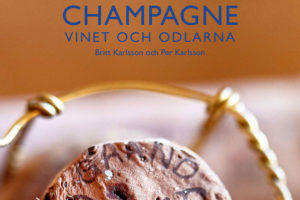 On March 22 we launched our new Champagne book, “Champagne, vinet och odlarna”. This is Swedish (the book is written in Swedish) and means “Champagne, the wine and the growers”. The launch took place at a book store called Akademibokhandeln at Mäster Samuelsgatan in Stockholm. Big thanks to Akademibokhandeln for all the help to organise this event! Around 160 people came, many more than we had dared hope for. Many thanks also to the importers that sponsored with delicious champagnes. During the launch we enjoyed the following champagnes (these are, of course, included in the book). A longer presentation of these six producers will soon be published on BKWine Magazine.
On March 22 we launched our new Champagne book, “Champagne, vinet och odlarna”. This is Swedish (the book is written in Swedish) and means “Champagne, the wine and the growers”. The launch took place at a book store called Akademibokhandeln at Mäster Samuelsgatan in Stockholm. Big thanks to Akademibokhandeln for all the help to organise this event! Around 160 people came, many more than we had dared hope for. Many thanks also to the importers that sponsored with delicious champagnes. During the launch we enjoyed the following champagnes (these are, of course, included in the book). A longer presentation of these six producers will soon be published on BKWine Magazine.
- Champagne Fleury, blanc de noir with character from the Aube
- Champagne Diebolt-Vallois, Chardonnay from Cramant
- Champagne Alexandre Penet, elegant extra brut from Verzy
- Champagne Eric Rodez, powerful blanc de noir from Ambonnay
- Champagne Doyard-Mahé, elegant blanc de blanc from Vertus
- Champagne Thierry Perrion, tasty pinot noir from Verzenay
Spanish Freixenet makes Italian Prosecco
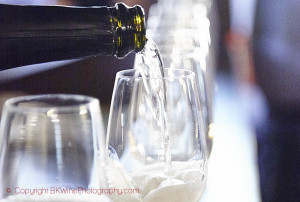 The Cava house Freixenet has for some time been looking east towards the Italian Prosecco competitors. And now we see the result. Freixenet is launching its on Prosecco DOC and Prosecco DOCG. The two wines were presented at ProWein, the big wine fair that recently took place in Dusseldorf.
The Cava house Freixenet has for some time been looking east towards the Italian Prosecco competitors. And now we see the result. Freixenet is launching its on Prosecco DOC and Prosecco DOCG. The two wines were presented at ProWein, the big wine fair that recently took place in Dusseldorf.
The wines are made by the large cooperative La Marca in Treviso. The cooperative has 5000 hectares at its disposal, divided between as many growers. The vineyards are in the areas covering the Prosecco DOC and Conegliano Valdobbiadene DOCG.The Freixenet Prosecco is said to have around 17 grams of dosage which puts it into the category of “extra dry”. 17 grams of sugar gives a soft wine with a discreet acidity. Read more: meininger.de
Nuance 2015, La Cendrillon, Vin de France | Britt’s Wine of the Month
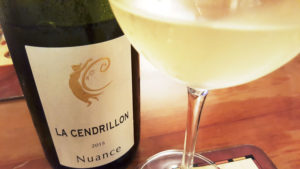 A delicious white wine with excellent freshness. Full-bodied, some “fat” and with a lot of fresh fruit. The grape blend is unusual: petit manseng, albariño, verdejo, grenache blanc and grenache gris. And these unusual grapes are of course the reason why this wine is a Vin de France.
A delicious white wine with excellent freshness. Full-bodied, some “fat” and with a lot of fresh fruit. The grape blend is unusual: petit manseng, albariño, verdejo, grenache blanc and grenache gris. And these unusual grapes are of course the reason why this wine is a Vin de France.
Domaine de la Cendrillon (cendrillon = Cinderella) is located in the Corbières appellation in Languedoc and has around 40 hectares in production. The estate obtained its organic certification in 2013. The owners, Robert and Geneviève Joyeux, and their winemaker do quite a bit of experimentation. Not least when it comes to choosing which grapes to grow. Their explanation for the Nuance grapes is that they want more freshness in their wine than they think they can have with the grapes that are permitted in the region. Read more: lacendrillon.fr
Austrian Respect-Biodyn certifies biodynamic winemakers
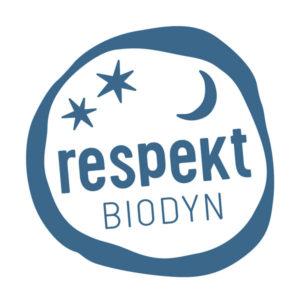 Demeter is a large, global organization that certifies biodynamic wine growers and other farmers. But Demeter is not alone in doing this. In France, Biodyvin certifies around 100 members. And now there is also a third group, with headquarters in Austria, called Respect-Biodyn. This group is working, just like Biodyvin, only the wineproducers.
Demeter is a large, global organization that certifies biodynamic wine growers and other farmers. But Demeter is not alone in doing this. In France, Biodyvin certifies around 100 members. And now there is also a third group, with headquarters in Austria, called Respect-Biodyn. This group is working, just like Biodyvin, only the wineproducers.
Respect-Biodyn’s members are mainly in Austria but also in Germany, Hungary and Italy. Currently the group has 22 members. Their aim is to produce individual and characterful wines. The rules/guidelines are in some cases more stringent than for Demeter and Biodyvin wines. Members include renowned wine makers such as Fred Loimer, Gerhard Pittnauer, Hans and Anita Nittnaus, Clemens Busch and Franz Weninger. Read more respekt-biodyn.bio.
(An important comment: Bioydnamic certifications are private and can, as you see, vary. In contrast, organic certification is, within the EU, strictly regulated with common rules and is identical within all of the EU. Read more in our book on organic and biodynamic wines.)
Montpellier has, again, two large wine fairs: Millésime Bio and Vinisud
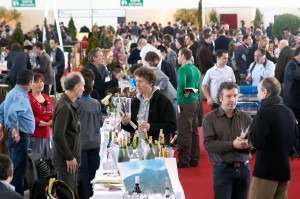 The move to Marseille was short-lived. For the 2018 edition Millésime Bio returns to Montpellier. The dates for Millésime Bio will be January 29 to 31. There will be no cooperation with the other major Montpellier wine fair, Vinisud, something that Vinisud seems to have wanted but not Millésime Bio.
The move to Marseille was short-lived. For the 2018 edition Millésime Bio returns to Montpellier. The dates for Millésime Bio will be January 29 to 31. There will be no cooperation with the other major Montpellier wine fair, Vinisud, something that Vinisud seems to have wanted but not Millésime Bio.
Vinisud 2018 will take place on 18-20 February. So now the “order” is restored after this year’s dispute when Vinisud took place at dates that overlapped the Millésime Bio dates. This angered Millésime Bio and caused its temporary move to Marseille.
Lower copper limit for organic wine producers. Maybe.
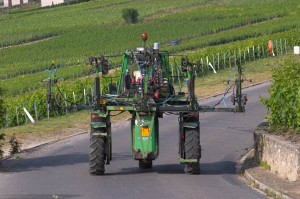 Being an organic winegrower means that you are obliged to spray with copper to prevent certain fungal diseases rather than using synthetic pesticides. Copper is effective primarily against mildiou. As with all other pesticides the authorisation to use copper is renewed every ten years. This year the EU will evaluate copper and decide whether to reduce the permitted quantity, something the EU has wanted to do for years. Currently, the limit is set at 6 kg copper per hectare per year (calculated as an average over five years).
Being an organic winegrower means that you are obliged to spray with copper to prevent certain fungal diseases rather than using synthetic pesticides. Copper is effective primarily against mildiou. As with all other pesticides the authorisation to use copper is renewed every ten years. This year the EU will evaluate copper and decide whether to reduce the permitted quantity, something the EU has wanted to do for years. Currently, the limit is set at 6 kg copper per hectare per year (calculated as an average over five years).
EFSA, the European Food Safety Authority, recommends that the limit is lowered to 4 kilos. Many organic winegrowers are against a reduction and they will no doubt fight with all their might to keep the 6 kilo limit. Read more: vitisphere.com
Bordeaux exports stable in 2016
Bordeaux exported 2 million hectolitres of wine (270 million bottles) in 2016. The region accounts for 17% of French wine exports in volume and 36% of the value. China and the US compensate for declining exports to Europe. The six largest markets for Bordeaux wines in value are:
- China: The growth continues and China is the biggest export country since 2015, both in volume and value. A third of the wines cost less than € 3 per litre (export price).
- Hong Kong: Very focused on high-end wines. In seventh place for volume.
- United States: Also a third place in terms of volume. The largest amount of wines is between 4.5 and 9 € per litre (export price).
- United Kingdom: Since the financial crisis of 2008/2009, exports to the UK is a little shaky. In fourth place also for volume.
- Japan
- Belgium: A small country but very faithful to Bordeaux. In second place in terms of volume.
Read more: bordeaux.com
You can join us on a wine tour to Bordeaux this autumn to get a chance to taste these great wines. And also a few places left on the spring tour in May.
Some organic favourites worth trying
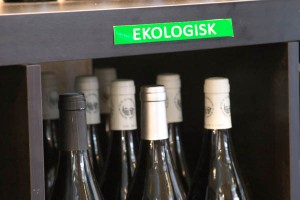 Here’s a handful of organic wines that we have encountered recently that we certainly recommend trying:
Here’s a handful of organic wines that we have encountered recently that we certainly recommend trying:
Anima, Avondale, Chenin Blanc, 2013, South Africa, ~15 €. Nice honey tone, a little pineapple and citrus, elegant and subtle oak. The wine is full-bodied without being heavy.
Vacqueyras Garrigues, Domaine Montirius, Vacqueyras, France, ~16 €. Clean and nice fruit flavours without the slightest aging in oak. As the name indicates there is some garrigue aromas, especially Provencal herbs and juniper. The grapes are Grenache and Syrah.
Pura Fe, Antiyal, Garnacha Syrah 2013, Maipo, Chile, ~16 €. Antiyal was founded in 1996 by Alvaro Espinoza, one of the world’s most influential biodynamic winemaker. Here we have an intense, tasty and ripe fruit and also a good structure.
Mas Sinén Negre, Priorat, Spain, ~19 €
50% Garnacha and the rest is Cariñena, Cabernet Sauvignon and Syrah. Concentrated and powerful wine, some oak but everything in perfect balance.
Cavalier Cesare Canonica, Langhe Nebbiolo , Piemonte, ~19 €. Good acidity and firm tannins. Exactly what you want from a Nebbiolo.
Features
Features that we have published during the past month, with lots of reading for you.
The Renaissance of Gin in four instalments
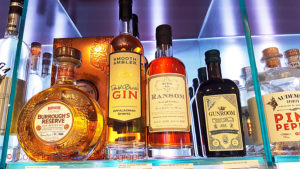 If you want to know more about gin then you should read this four-part article. It is a text that explains in straight-forward terms more about the history, the production, the consumption and on the market for gin today. And also makes predictions on how the market will develop in the future. It is interesting to see, for example, what made gin popular again a few decades ago, after years of declining sales.
If you want to know more about gin then you should read this four-part article. It is a text that explains in straight-forward terms more about the history, the production, the consumption and on the market for gin today. And also makes predictions on how the market will develop in the future. It is interesting to see, for example, what made gin popular again a few decades ago, after years of declining sales.
The series is written by Andrew de Csillery and you now have part three and four available on BKWine Magazine:
- The Renaissance of Gin, 3: The revival of Gin over the past 30 years
- The Renaissance of Gin, 4: Conclusions and Commentary, how the category and market may develop over the next 10 years
Bordeaux 2015, and a few older wines
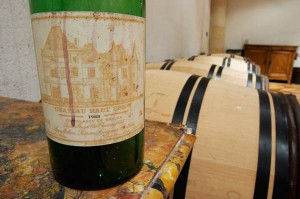 “One of last year’s most interesting tastings was organized by the Danish on line wine shop WineFinder in collaboration with the Swede Fredrik Rudebeck, owner of the oldest négociant firm, Maison Beyerman, which dates back to 1620! Fifty Bordeaux chateaux were present. From the late 1960s, almost all of the chateaux take care of their own work when it comes to production, storage and bottling. However, when it comes to the sales part over seventy percent of the wine production in Bordeaux is sold by the 400 negociants to buyers around the world.”
“One of last year’s most interesting tastings was organized by the Danish on line wine shop WineFinder in collaboration with the Swede Fredrik Rudebeck, owner of the oldest négociant firm, Maison Beyerman, which dates back to 1620! Fifty Bordeaux chateaux were present. From the late 1960s, almost all of the chateaux take care of their own work when it comes to production, storage and bottling. However, when it comes to the sales part over seventy percent of the wine production in Bordeaux is sold by the 400 negociants to buyers around the world.”
Read the rest of Roland Eriksson’s article on Bordeaux 2015 on BKWine Magazine: Bordeaux 2015, and a few older wines, presented by Winefinder.
You can join us on a wine tour to Bordeaux this autumn to get a chance to taste these great wines. And also a few places left on the spring tour in May.
New Spain: Meet the wine producers in Garnacha de Gredos
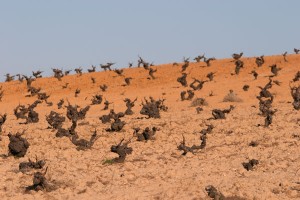 “Despite being only 60-90 minutes by car or rail from Madrid, compared to most of Spain’s known quality wine regions the Garnacha de Gredos area remains unknown to the US wine pro. Its establishment as a modern wine-producing region dating only to the 1990s, the recent economic difficulties beginning in 2008 which crippled nascent efforts. Garnacha de Gredos remains at this time one of the rare ’undiscovered territories’ in the Old World, more so as the wines’ quality is generally commensurate if not in excess of the prices…for now.”
“Despite being only 60-90 minutes by car or rail from Madrid, compared to most of Spain’s known quality wine regions the Garnacha de Gredos area remains unknown to the US wine pro. Its establishment as a modern wine-producing region dating only to the 1990s, the recent economic difficulties beginning in 2008 which crippled nascent efforts. Garnacha de Gredos remains at this time one of the rare ’undiscovered territories’ in the Old World, more so as the wines’ quality is generally commensurate if not in excess of the prices…for now.”
Read more on the producers in Garnacha de Gredos in David Furer’s second article on this Spanish wine region on BKWine Magazine: Meet the wine producers in Garnacha de Gredos.
Wine tours
Some information about current and future wine tours with BKWine.
Wine tours autumn 2017 and winter 2018
You will find all information about our wine tours for autumn 2017 and our South America tour beginning of 2018 on bkwinetours.com. You can choose between France, Portugal, Italy and Argentina & Chile. All destinations will give you a magnificent wine and food experience.
- Bordeaux, 27 September – 1 October
- Douro Valley in northern Portugal, 18-22 October
- Piedmont, Wine, Food and Truffles, October 18-22
- Alentejo and Setubal, Portugal, 25-29 October
- Argentina & Chile, 27 January – 11 February 2018
- South Africa, Feb-March 2018 (dates coming soon)
Storks, pigs, cork oaks and plenty of wine in Alentejo | wine tour
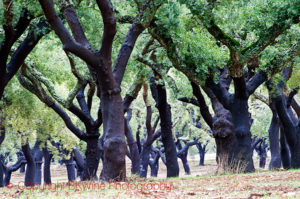 When you take the motorway east from Lisbon you have about an hour and a half’s drive until you arrive in the heart of the Alentejo region. On the way you will be passing stork nests on top of electricity pylons (you’ll be lucky if you see a bird), open fields with cows and a few pigs, the famous black ones that give the delicious cured ham, and innumerable oak trees. It’s not until you arrive that you start seeing the vineyard. But there are plenty of them in the Alentejo region. It has shot up to become Portugal’s biggest wine region. One reason for the success is of course the dynamism of the growers and the quality of their wines. It is in many ways a pioneering region in Portugal.
When you take the motorway east from Lisbon you have about an hour and a half’s drive until you arrive in the heart of the Alentejo region. On the way you will be passing stork nests on top of electricity pylons (you’ll be lucky if you see a bird), open fields with cows and a few pigs, the famous black ones that give the delicious cured ham, and innumerable oak trees. It’s not until you arrive that you start seeing the vineyard. But there are plenty of them in the Alentejo region. It has shot up to become Portugal’s biggest wine region. One reason for the success is of course the dynamism of the growers and the quality of their wines. It is in many ways a pioneering region in Portugal.
We will show you that in great depth (many, many wines to taste), as well as introduce you to the local gastronomy on the Alentejo & Setubal wine tour on October 25-29.
Chile and Argentina, contrasts in South America | wine tour
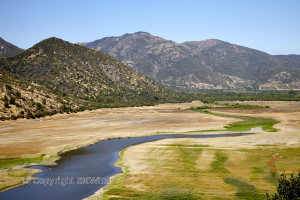 The program is now finalised for 2018! Without a doubt our longest wine tour. It starts in Buenos Aires (with tango), continues to Mendoza, at the foot of the Andes. Then over the Andes, along the country road through a landscape that is strange and enthralling, reaching well over 10,000 feet. Continuing to the Pacific Ocean with a view towards Japan (although maybe not quite visible). A stop in Valparaiso of course, this mythical harbour town. Then going south along this narrow strip of land between the ocean and the Andes.
The program is now finalised for 2018! Without a doubt our longest wine tour. It starts in Buenos Aires (with tango), continues to Mendoza, at the foot of the Andes. Then over the Andes, along the country road through a landscape that is strange and enthralling, reaching well over 10,000 feet. Continuing to the Pacific Ocean with a view towards Japan (although maybe not quite visible). A stop in Valparaiso of course, this mythical harbour town. Then going south along this narrow strip of land between the ocean and the Andes.
Two weeks filled with incredible experiences, innumerable delicious wines, magnificent meals, not least the South American asado (meat grilled over an open fire). Through two neighbouring countries, similar in some ways, but still very, very different. A tour that stays in the memory for a long, long time. Read more: the wine tour to Chile and Argentina, January 27 to February 11, 2018.
If you want to see more pictures and videos you can visit our Facebook group for the 2017 wine tour to Chile and Argentina.
Don’t be an egoist! Share with your friends and other wine enthusiasts! Forward the Brief to your friends! Suggest that they sign up for a free subscription !
© Copyright BKWine






